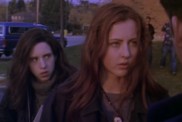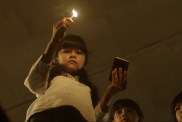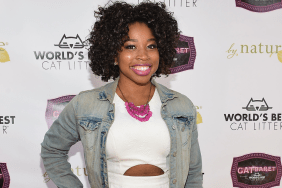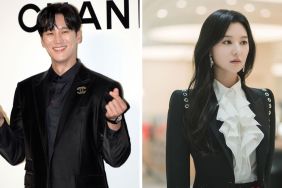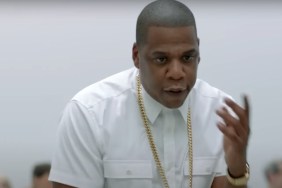
I considered writing a review and then writing a follow-up piece concerning Shane Carruth‘s sophomore effort Upstream Color, but couldn’t quite find a way to do one without doing the other. Therefore, the result is the following, 1300-word stream of consciousness of which I hope makes, at the very least, a modicum of sense.
Upstream Color is only the writer-director’s second film following 2004’s time travel mind-bender Primer and it’s sure to confuse audiences on far greater levels than its predecessor and it sounds like he’s going even grander, at least in scope, with his next film, The Modern Ocean, which deals with shipping routes, competing corporations and I’m sure multiple metaphorical levels of thinking, or, at the very least, a straight-forward interpretation of today’s shrinking world.
And so, to Upstream Color, a film I took to be entirely metaphorical, though told as something of a horror, romantic, sci-fi thriller. However just attributing those words in an attempt to fit it in some sort of box seems to distort what makes it a wholly unique piece of work.
I won’t pretend I understood every piece and fragment of the film, but for the most part I feel I was in tune with its teachings.

The heart and guiding light of Upstream Color is Henry David Thoreau‘s 1854 publication “Walden“. Thoreau, a noted transcendentalist, spent two years in a cabin he built and among his many goals recorded in the book, were those of self-sufficiency and simple living. Thus begins the roots of Upstream Color, a film that takes a look at what makes us human and what happens when we are stripped down to the bare essentials and any preconceived notions of self. Essentially starting anew.
The way the story is presented I initially began thinking it was something of a social conditioning story, and in a way it is. It takes a look at what happens if a person is stripped of any conditioning they otherwise may know. Conditioning that comes as a result of years of life lived. What happens if this conditioning is removed, what happens if all that life in society has taught us is stripped away?
From the pages of Thoreau’s “Walden” comes this popular passage, explaining his experiment and goals:
I went to the woods because I wished to live deliberately, to front only the essential facts of life, and see if I could not learn what it had to teach, and not, when I came to die, discover that I had not lived. I did not wish to live what was not life, living is so dear; nor did I wish to practice resignation, unless it was quite necessary. I wanted to live deep and suck out all the marrow of life, to live so sturdily and Spartan-like as to put to rout all that was not life, to cut a broad swath and shave close, to drive life into a corner, and reduce it to its lowest terms, and, if it proved to be mean, why then to get the whole and genuine meanness of it, and publish its meanness to the world; or if it were sublime, to know it by experience, and be able to give a true account of it in my next excursion.
Within these words I find the meaning of Upstream Color. The film is presented as something of a science experiment as we follow two people — Kris (Amy Seimetz) and Jeff (Shane Carruth) — both are unwitting participants in an experiment that finds them under the care of a character known only as The Sampler (Andrew Sensenig) thanks to the film’s credits as he has no name in the film itself.
Kris, however, is our gateway into the story. Before The Sampler gets hold of her, a botanist (Thiago Martins credited as “Thief”) implants a genetically altered maggot into her body, allowing him a certain level of mind control over his target (see the clip to the right). The reason she was targeted is unclear, which is one of Carruth’s smartest pieces of storytelling both here and with Primer. Attempting to explain the science of something unexplainable in movies will only lead the audience to search for holes, whereas Carruth only offers the bare essentials (and, in this case, less) so the audience has all the information they need and nothing more.
Days pass and Kris is coerced into signing her life away and is left in a horrific state in her home. Unaware of what has transpired or what is living inside her she is drawn to The Sampler who ultimately performs surgery, removing the maggot, which has grown considerably larger, from her body. The metaphor for the maggot’s growth and the state Kris finds herself in, for me, is what I have already mentioned as the stripping away of any preconceived notions and conditioning of what it means to be human. In a way, Kris is now pure of heart and mind.
Slowly, Kris begins to function in society, but she’s still in something of a daze. She meets Jeff, the two begin to form a relationship, though it’s not easy, pushing each other way, yet continually drawn to each other. We’re given doses of dialogue that seem to exist at the tail end of a conversation we haven’t heard. All I could takeaway from these moments were elements of a rediscovery of self.

As Kris and Jeff grow closer, so do their memories. In fact, they begin to share memories causing confusion and anger, but within this confusion they find each other through their differences, which are slowly bubbling to the surface… in some cases as a noise from beneath the house, each hearing it differently as would be expected.
My personal understanding of the film soon came together as The Sampler would be shown in the same room as Kris and Jeff, observing them, but with them seemingly not seeing him. Why? My thoughts of social conditioning resurfaced. The Sampler, as we have seen him, is a scientist, looking over his experiment, taking notes, examining their behavior and modifying the situation when problems arise. However, I also began to view The Sampler as a metaphor for society itself, the empty room within which he observes Kris and Jeff serving as a metaphor for their loneliness in a world in which society looks on with judgmental eyes.
So often people will say they love going to the airport to “people watch”. Sitting back and observing as all the beautiful, ugly and strange facets of life walk by. The question that came to my mind at this moment was: “What happens when someone under the microscope of society looks back?”

There’s a scene in which Kris stares down The Sampler, pulls a gun, shoots and presumably kills him. Is she killing a man or an idea?
It was here I believed Kris had regained awareness and a sense of self and with it had come a greater respect for who she was and she wanted to take care better care of herself.

Now I’ve gotten this far without mentioning the pigs… Yes, the piglet dopplegangers into which the worms extracted from Kris and others like her are implanted. The Sampler is not only a scientist and a metaphor for society, he’s also a pig farmer, which in my world is too many hats for one man to wear, which is why I don’t view him as a man at all, but more as an amalgamation of related ideas.
Following the killing of The Sampler, Kris caresses her sow with an appreciation for what made her… her.
This is what I took away from the film following my first time watching it. There is much more to explore, much more that would need explaining for all the pieces to come together. Maybe some day, but for the time being I’ll be fascinated to hear other interpretations as more and more people get a chance to see it.
ERBP is opening Upstream Color in New York this weekend, April 5, and it will expand to Los Angeles and additional markets on April 12. Instant streaming and HD downloads will be available May 7. You can preorder here.
Get more on the film using the links below.
